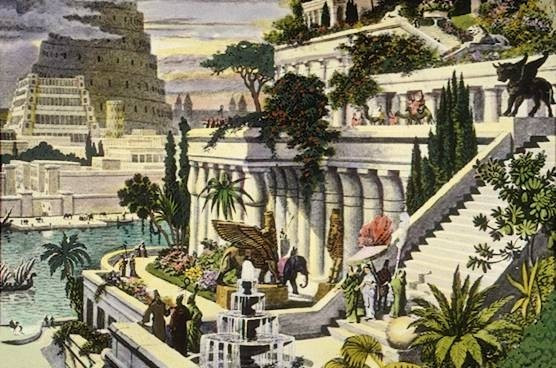Hanging Garden of Babylon Researchers Looking for Ancient Wonder ‘in the Wrong Place’
18-year research project concludes Hanging Garden were 300 miles north of Babylon

The site of one of the Seven Wonders of the World, the Hanging Garden of Babylon, has never been found because researchers have been looking in the wrong place, an expert has said.
Stephanie Dalley, from Oxford University, has spent the last 18 years researching the Hanging Garden and concluded that it was 300 miles north of Babylon where historians and archaeologists had been looking.
Dalley has amassed a host of evidence to show that the garden was located at Nineveh during the seventh century BC. She added that it was laid out by the Assyrians in what is now Iraq, not by the Babylonians as widely believed.
Dalley's research will be presented in her new book, The Mystery of the Hanging Garden of Babylon, which is due for release later this month.
For centuries, people have believed the Hanging Garden was in Babylon, which is now in Babil province. It was thought to have been built by King Nebuchadnezzar II in homage to his homesick wife Amytis of Media.
The garden was understood to have been destroyed in the second century BC by earthquakes. However, Dalley now had evidence to suggest this was not the case.
She believes the garden was created by the Assyrian king Sennacherib, enemy of the Babylonians.
The language expert translated Babylonian and Assyrian scripts and reinterpreted translations made in Greek and Roman texts.
In one, she found Sennacherib described a palace that was a "wonder for all people", which included a water-raising screw using cast bronze - this was thought to have been invented many years later.
Dalley believes this was part of a system of canals, dams and aqueducts that brought water from streams 50 miles away. Excavations have shown traces of aqueducts in the area.
Another possible translation error, she says, may have led people to believe the garden was in Babylon.
Assyria conquered Babylon in 689BC and Dalley says the capital Nineveh may have been called the 'New Babylon', creating the myth that the garden was located 300 miles south.

Speaking about her research over the years, Dalley told IBTimes UK: "There was a nest of problems - the confusion between Nineveh and Babylon was one of them, the confusion between Nebuchadnezzar and Sennacherib was another.
"It took a while to realise that the network of canals, dams and aqueducts East of Nineveh was a part of the Wonder, and that Alexander the Great was camping in the vicinity for over a week before the battle of Gaugamela, so he and his scouts would have seen the waterworks and the rock carvings that marked the king's authority.
"His historians, now not extant but quoted by later authors, would have heard about the marvellous palace and its garden while they were there, and wrote about it. This helps to explain why Herodotus did not mention the garden when he wrote about Babylon. It was also necessary to work out how to present the evidence for a water-raising screw before the time of Archimedes, and to explain the phenomenon of national culture heroes."
Explaining why no one considered the garden may be elsewhere before, Dalley said an early account of Xenophon's Persian Expedition meant archaeologists were taking Nineveh being a complete ruin at face value: "Rather like archaeologists in Palestine digging with the Bible under their arm."
In the book Dalley concludes: "That the Hanging Garden was built in Babylon by Nebuchadnezzar the Great is a fact learned at school and can be 'verified' in encyclopaedias and histories of ancient times.
"To challenge such a universally accepted truth might seem the height of arrogance - revisionist scholarship at its worst. But Assyriology is a relatively recent discipline and a new understanding is necessary."
Asked whether she thinks the Hanging Garden will be found, Dalley said: "I have suggested where the garden may be, in the book, but the site is so eroded and difficult for many reasons that I am pessimistic."
© Copyright IBTimes 2025. All rights reserved.




















